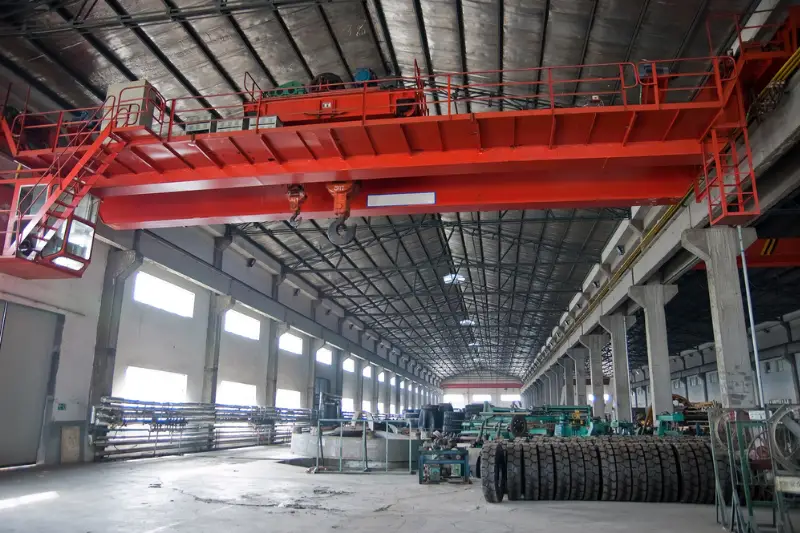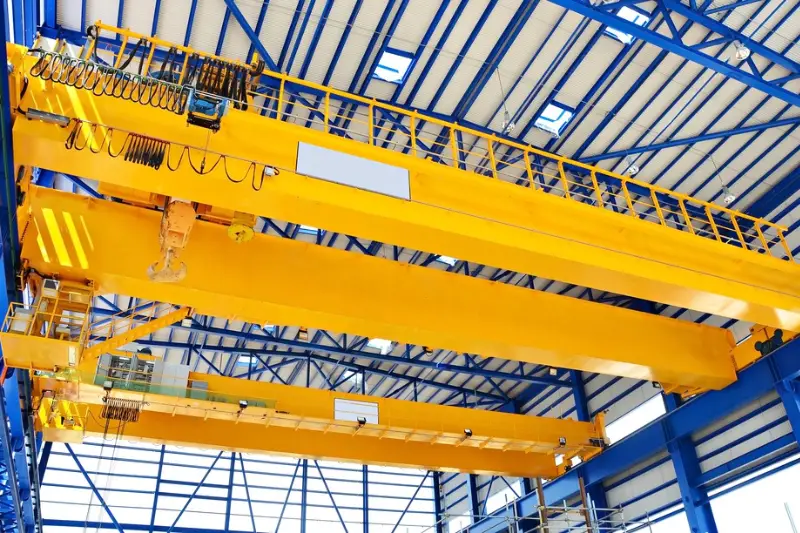Click here to get this post in PDF
If you’re in the market for a bridge crane to optimize your material handling operations, you’ve come to the right place. Overhead cranes are incredibly versatile and widely used in various industries to lift heavy loads efficiently. Safety is of paramount importance when dealing with heavy equipment and elevated heights. We’ll guide you through the process of choosing a safe EOT crane that perfectly suits your needs and ensures smooth operations.
Assessing Your Lifting Requirements
Before you start exploring bridge crane options, take some time to assess your lifting requirements. What type of loads will you be handling? Are they heavy machinery, raw materials, or finished products? Determine the maximum weight, size, and dimensions of the loads. Understanding your specific needs will help you choose a EOT crane with the appropriate lifting capacity, span, and height to meet your material handling demands.
Analyzing Your Workspace
The next crucial step is to analyze your workspace thoroughly. Consider the available floor space, ceiling height, and any potential obstacles that might affect the crane’s movement. A comprehensive analysis will help you determine whether you need a top-running overhead crane, which travels along rails attached to the building’s overhead structure, or an under-running bridge crane that runs on the bottom flange of runway beams. Choose the option that best fits your spatial requirements and allows for smooth and safe material handling.
Selecting the Right Bridge Crane Type
Now that you have a clear understanding of your lifting needs and workspace, it’s time to explore the different types of EOT cranes available:
Single Girder Bridge Crane
A single girder bridge crane consists of one main horizontal beam supported by end trucks that run on the crane runway. These cranes are cost-effective, compact, and suitable for light to moderate lifting applications. They are commonly used in small manufacturing facilities, workshops, and warehouses.
Double Girder Bridge Crane
A double girder bridge crane features two horizontal beams that provide increased stability and higher lifting capacity compared to single girder cranes. They are ideal for heavy-duty applications, such as foundries, steel mills, and construction sites.
Emphasizing Safety Features
Safety should always be a top priority when choosing an overhead crane. Look for the following safety features to ensure a secure working environment:
Overload Protection
Ensure that the bridge crane comes equipped with overload protection systems to prevent the crane from lifting loads beyond its rated capacity.
Limit Switches
Limit switches are essential safety components that set boundaries for the crane’s movement, preventing it from over-traveling or colliding with other objects.
Emergency Stop Button
An easily accessible emergency stop button allows crane operators to halt all crane movements instantly in case of any emergencies or hazardous situations.
Regular Maintenance and Inspections
To ensure the longevity and safe operation of your bridge crane, regular maintenance and inspections are crucial. Partner with a reputable supplier that offers maintenance packages and prompt response times for repairs. Scheduled inspections will help detect any potential issues early on and prevent costly breakdowns, ensuring your overhead crane remains in optimal condition.
Selecting a safe bridge crane requires careful consideration of your lifting requirements, workspace, and safety features. Choose the overhead crane type that best suits your needs, and prioritize safety features such as overload protection, limit switches, and emergency stop buttons. Remember to maintain and inspect your EOT crane regularly to ensure efficient and safe material handling operations. Now, you’re well-equipped to make an informed decision and invest in a overhead crane that will boost productivity and safety in your workplace.
You may also like: 5 Common applications of industrial crane scales
Image source: Depositphotos.com


